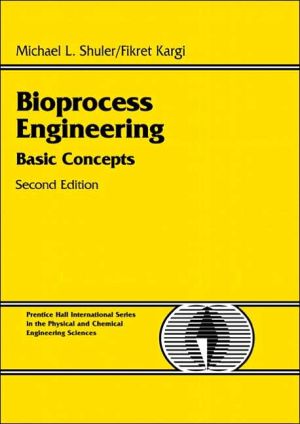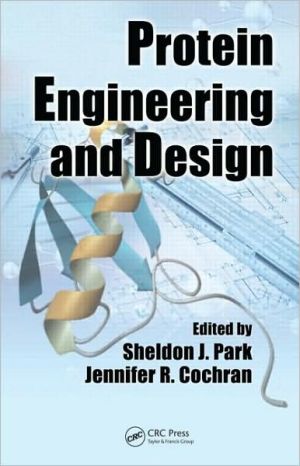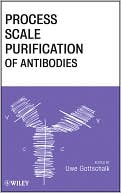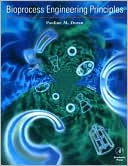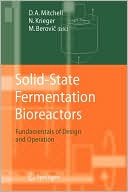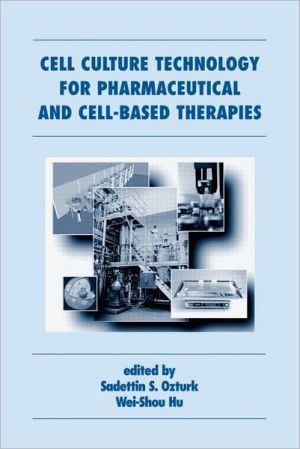Bioprocess Engineering: Basic Concepts
The complete, fully updated introduction to biochemical and bioprocess engineering.\ Bioprocess Engineering, Second Edition is a comprehensive update of the world's leading introductory textbook on biochemical and bioprocess engineering. Drs. Michael L. Shuler and Fikret Kargi review the relevant fundamentals of biochemistry, microbiology, and molecular biology, introducing key principles that enable bioprocess engineers to achieve consistent control over biological activity. This edition...
Search in google:
Bioprocess Engineering, Second Edition thoroughly updates the leading introductory textbook on biochemical and bioprocess engineering to reflect advances that are transforming the field — from genomics to cellular engineering, modeling to nonconventional biological systems. It introduces techniques with wide applicability in pharmaceuticals, biologics, medicine, environmental engineering, and beyond.
Preface to the Second Edition\ In the decade since the first edition of Bioprocess Engineering: Basic Concepts, biotechnology has undergone several revolutions. Currently, the ability to sequence the genome of whole organisms presents opportunities that could be hardly envisioned ten years ago. Many other technological advances have occurred that provide bioprocess engineers with new tools to serve society better. However, the principles of bioprocess engineering stated in the first edition remain sound.\ The goals of this revision are threefold. We want to capture for students the excitement created by these advances in biology and biotechnology. We want to inform students about these tools. Most importantly, we want to demonstrate how the principles of bioprocess engineering can be applied in concert with these advances.\ This edition contains a new section in the first chapter alerting students to the regulatory issues that constrain bioprocess design and modification. We believe students need to be aware of these industrially critical issues. Part 2, "An Overview of Biological Basics," has been updated throughout and expanded. Greater emphasis is given now to posttranslational processing of proteins, as this is a key issue in choice of bioprocessing strategies to make therapeutic proteins. Basic processes in animal cells are more completely described, since animal cell culture is now an established commercial bioprocess technology. Chapter 5 is made more complete by introduction of a section on noncarbohydrate metabolism. Key concepts in functional genomics have been added to prepare students to understand the impact of these emerging ideas and technologies on bioprocesses.\ In Part 3, "Engineering Principles for Bioprocesses," greater attention is given to issues associated with animal cell bioreactors. The discussion of chromatographic processes is expanded. In Part 4, "Applications to Nonconventional Biological Systems," the material has been rearranged and updated and a new chapter added. These changes are evident in the chapters on animal and plant cell culture. Particularly important is the expanded discussion on choice of host-vector systems for production of proteins from recombinant DNA technology. Coverage of two areas of increasing importance to bioprocess engineers, metabolic and protein engineering, has been expanded. A new chapter on biomedical applications illustrates how approaches to bioprocess engineering are relevant to problems typically considered to be biomedical engineering. The chapter on mixed cultures has been extended to cover advanced waste-water treatment processes. An appendix providing descriptive overviews of some traditional bioprocesses is now included.\ The suggestions for further reading at the end of each chapter have been updated. We are unable in this book to provide in-depth treatment of many vital topics. These readings give students an easy way to begin to learn more about these topics.\ Teaching a subject as broad as bioprocess engineering in the typical one-semester, three-credit class has never been easy. Although some material in the first edition has been removed or condensed, the second edition is longer than the first. For students with no formal background in biology, coverage of all of the material in this book would require a four-credit class. In a three-credit class we suggest that the instructor cover Chapters 1 to 11 (with 7 being optional) and then decide on subsequent chapters based on course goals. A course oriented toward biopharmaceuticals will want to include careful coverage of Chapters 12 and 14 and some coverage of 13 and 15. A course oriented toward utilization of bioresources would emphasize Chapter 16 and the Appendix and selected coverage of topics in Chapters 13 and 14.\ Many students now enter a bioprocess engineering course with formal, college-level instruction in biology and biochemistry. For such students Chapters 2, 4, 5, 7, and 8 can be given as reading assignments to refresh their memories and to insure a uniform, minimal level of biological knowledge. Lecture time can be reserved for material in other chapters or for supplementary material. For these five chapters study questions are provided for self-testing. Under these circumstances the instructor should be able to cover the rest of the material in the book.
Preface to the Second EditionPreface to the First EditionPt. 1Introduction11What is a Bioprocess Engineer?1Pt. 2The Basics of Biology: An Engineer's Perspective112An Overview of Biological Basics113Enzymes574How Cells Work1055Major Metabolic Pathways1336How Cells Grow1557Stoichiometry of Microbial Growth and Product Formation2078How Cellular Information is Altered219Pt. 3Engineering Principles for Bioprocesses2459Operating Considerations for Bioreactors for Suspension and Immobilized Cultures24510Selection, Scale-Up, Operation, and Control of Bioreactors28511Recovery and Purification of Products329Pt. 4Applications to Nonconventional Biological Systems38512Bioprocess Considerations in Using Animal Cell Cultures38513Bioprocess Considerations in Using Plant Cell Cultures40514Utilizing Genetically Engineered Organisms42115Medical Applications of Bioprocess Engineering46316Mixed Cultures47517Epilogue513AppTraditional Industrial Bioprocesses515Index535
